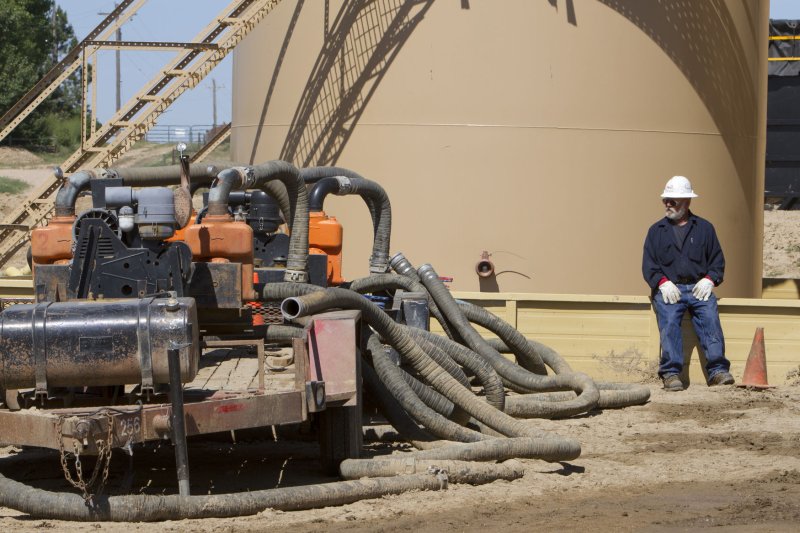U.S. shale energy company EOG Resources set spending guidance for 2018 that overshadows its peers. File photo by Gary C. Caskey/UPI. |
License Photo
Feb. 28 (UPI) -- U.S. shale player EOG Resources targeted spending for the year at 45 percent higher than 2017, though its production growth forecast was nearly the same.
EOG allocates its capital across the U.S. shale sector, from the Bakken reserve in North Dakota to the Eagle Ford in Texas. Spending for 2018 should be in a range between $5.4 billon and $5.8 billion, about 45 percent higher than guidance from 2017.
The company one year ago outlined a spending range between $3.7 billion to $4.1 billion, which it said would increase total crude oil output by 18 percent. Total spending this year could stimulate production by about 20 percent.
Capital expenditures for 2017 targeted 480 net wells, an 8 percent increase from 2016. Spending this year targets 690 wells, 28 percent more than actually completed last year.
In terms of production, the company left 2016 with an average rate of 282,500 barrels of oil per day and left 2017 with an average rate of 335,000 bpd.
Bill Thomas, the company's chairman and CEO, said last year was a success, considering lingering weakness in crude oil prices and headwinds from the series of hurricanes that hammered southern U.S. shale basins in late 2017.
"EOG emerged from the industry downturn in 2017 with unprecedented levels of efficiency and productivity, driving oil production volumes to record levels with capital expenditures approximately one half the prior peak," he said in a statement.
EOG plans to spend more than some of its industry peers. Apache Corp. set spending guidance for the year at around $3 billion, with 70 percent of that targeting the Permian shale basin in Texas.
An annual review from the U.S. Energy Information Administration of proved reserves of crude oil and lease condensate, an ultra-light form of oil, found Texas was the clear leader, adding 941 million barrels between 2015 and 2016. Most of it came from the Permian shale basin.
Continental Resources, meanwhile, said it would spend about $2.3 billion this year with the goal of ending 2018 with a production rate between 305,000 and 315,000 barrels of oil equivalent per day.















